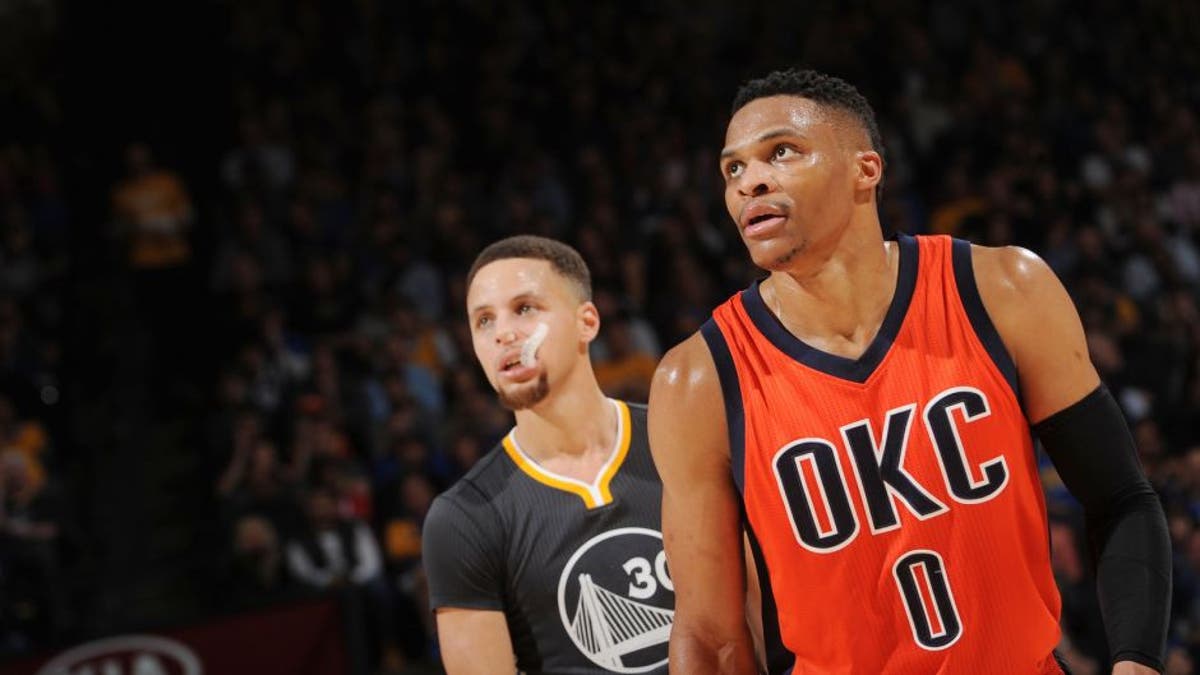
OAKLAND, Calif. -- There's a wonderful, poetic irony to it all.
The Golden State Warriors, the standard bearers of the NBA's new pace-and-space revolution, have a unanimous focus ahead of their Western Conference Finals matchup with the Oklahoma City Thunder:
Rebounding.
Yes, the art of gaining possession off a missed shot.
It's often forgotten as a key component of winning basketball games, but as the Thunder's domination of the boards against the San Antonio Spurs highlighted, even in this era of smallball lineups and four-out sets, it's still imperative to crash the boards.
The Warriors do it well, but the Thunder do it better, and Golden State is hyper-aware that it'll need to match Oklahoma City on the glass in the Western Conference Finals, which start Monday.
"This is a much bigger team. Rebounding will be key," Warriors coach Steve Kerr said Friday. "We have to keep them at bay on the glass."
For months, it was presumed that the Western Conference Finals would be a matchup between the 67-win San Antonio Spurs and the 73-win Warriors. The two historic teams seemed to be a class above the rest this season.
Instead, we have a matchup that's something resembling an old-school, new-school showdown.
The Thunder and coach Billy Donovan have found the best version of themselves by bucking their regular-season convention: Russell Westbrook and Kevin Durant are being staggered more frequently as the team's top two centers, Steven Adams, and Enes Kanter, are playing together.
Often against San Antonio, the Thunder put three 7-footers on the floor (including Durant), and with that size advantage, the Thunder thrived -- posting a plus-33 net rating in the unit's 51 minutes played since May 1.
The three-man unit of Kanter, Adams and Durant has pulled down an absurd 22.8 offensive rebounds per 48 minutes and 71.1 percent of the total available rebounds since Game 2 of the Western Conference Semifinals. That's a lot of possessions gained -- hence Golden State's newfound rebounding obsession.
But that unit also plays at an 86 pace (estimated number of possessions per 48 minutes.)
Do the Warriors fight fire with fire and avoid smallball in the Western Conference Finals, making sure that Andrew Bogut and Festus Ezeli are always on the court? (Or even play them together, something they've done for two minutes all season.)
Or do the Warriors concede the size matchup and go small in an effort to speed up the pace and pull the two big men out of position, negating their value?
It's a question that carries some existential weight for the NBA.
Kerr didn't show his hand Friday, saying only that the smallball narrative was "overblown" and that it'd be foolhardy to consider Draymond Green small.
He is, after all, a load, even at 6-foot-6.
And while he's correct in such affirmations (the Warriors are fourth in the NBA in rebounding, have two 7-footers and are among the longest teams in the NBA) the differences between the big Thunder and "small" Warriors still create a polarized matchup.
Success breeds copycats. Even more so than the NFL, the NBA is a "copycat league." The Warriors' historic runs over the last two years can be directly tied to the Suns' 7-seconds-or-less era. Now, there are more than a handful of teams that are trying to be next iteration, and logical escalation, of Golden State's progress. Pace-and-space and the 3-point shot are the new kings, after all.
But what if they're not? What if the era of two centers, popularized in the NBA of the 1990s, is due for a renaissance? Could the Thunder usher it in?
We can only sit back and wait to find out.
Everything and more is on the line in this Western Conference Final.
